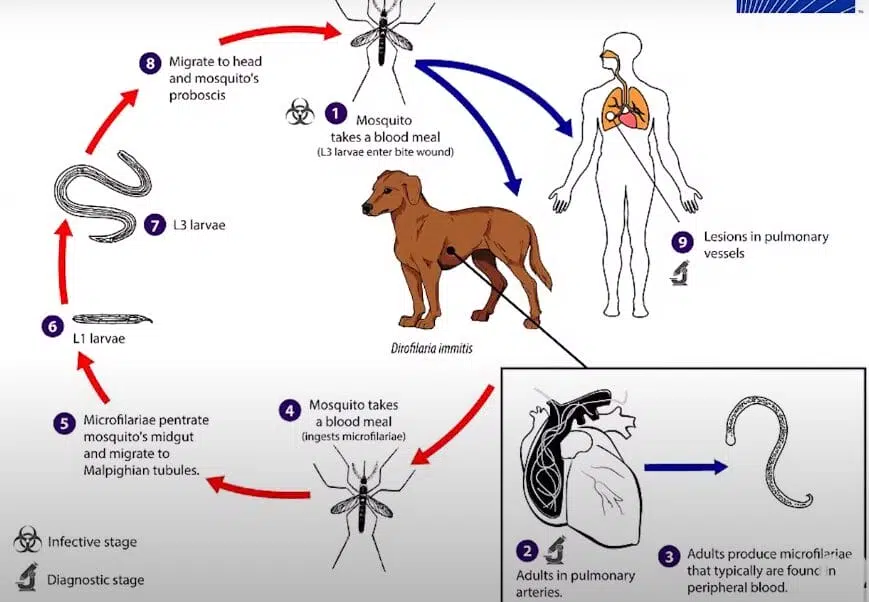Lethargic & Flinched Dog? 5 Critical Signs You Can’t Ignore!
When a dog suddenly becomes very lethargic, flinches shows exercise intolerance, or sensitivity to touch, it could indicate serious health issues, including heart, liver, or kidney disease. These symptoms, especially if the dog appears wobbly, flinches unexpectedly, or is severely lethargic to the point of seeming almost unconscious, necessitate immediate veterinary attention.
Dog Suddenly Lethargic and Flinching
Observing your dog walking really slow and looking weak signals urgent health concerns, possibly indicating conditions like kidney problems, liver failure, or cancer.
These symptoms—sudden lethargy, reluctance to eat or drink, and visible stress—necessitate immediate veterinary attention.
A veterinarian can identify the underlying medical reason, whether it’s pain causing the flinching or a serious illness, ensuring your pet receives the care needed to manage their health effectively.

Why is my dog flinching and acting weird all of a sudden?
When a dog becomes immobile and displays signs of discomfort or stress, possibly due to household changes or past traumas, it’s an indication of their unhappiness or discomfort in their environment.
These signs may include flinching at sounds, phobias of places or animals, and can be understood as silent expressions of fear or discomfort.
Addressing these behaviors requires empathy, considering past experiences and health, as symptoms like listlessness or stiff limbs could signal seizures or other serious conditions.
Consulting a veterinarian to diagnose these issues and creating a calming environment with familiar toys while avoiding stress triggers are essential steps to help your dog feel secure and comfortable.
Identifying Causes of Sudden Behavioral Changes in Dogs
When your dog suddenly becomes lethargic and starts flinching, it might indicate a significant change in their mental status or even ataxia, resembling a “drunken sailor” walk.
These symptoms could suggest the ingestion of a prescription or recreational drug, or they might be post-ictal signs following a seizure.
Consider if there’s a chance a pill could have fallen on the floor or if your pet has a history of seizures. Immediate veterinary consultation is essential to rule out these possibilities and ensure your dog’s safety and health.
Personal experience
After returning from a walk, a previously healthy 3-year-old male dog began showing unusual signs of lethargy, sensitivity to touch, and curling up, a behavior shift observed after a five-day kennel stay and his habitual scavenging.
He displayed flinching and a slight head wobble, prompting a consultation with an emergency veterinarian, who advised watching for mobility issues, excessive breathing, or vomiting.
Following a vomiting episode, the dog showed improvement, resuming normal activities and indicating a possible brief episode of nausea. Continuous monitoring of his condition is planned for the coming days.
Why is my dog twitching and flinching?
Dogs are naturally energetic creatures; however, there are instances where their energy levels may lead to heightened sensitivity. If you observe your canine companion exhibiting frequent twitching or flinching behaviors, it’s important to consider the underlying factors related to their nervous system.
Let’s explore some of the typical reasons behind these behaviors in dogs:
Tension in the neck
This behavior is often triggered by your dog’s intense concentration on a particular element in their surroundings.
Whether it’s an object of interest or aversion, your dog may exhibit a heightened state of alertness, manifesting in physical tension as they prepare either to engage or evade.
It’s not uncommon to observe your dog attempting to distance themselves from an undesirable stimulus, such as another animal passing by. However, their ability to do so is limited, as they remain in a vigilant and highly reactive state.
Fearfulness
Protective instincts come into play when your dog encounters a frightening or painful stimulus. This natural response can lead to behaviors such as flinching or twitching, as your dog’s body instinctively recoils and tightens up in an effort to shield itself from potential harm or discomfort.
This physical reaction serves as a defense mechanism, ensuring that they minimize exposure to any perceived threats or painful experiences.
Allergies
“Observable twitching and flinching in your dog could indicate an allergic reaction.” Such behaviors may suggest that your dog is adversely responding to something they have consumed or breathed in.
Many canines exhibit mild allergic reactions to specific foods, such as eggs or wheat. In certain situations, these reactions may escalate, potentially leading to severe health complications, including anaphylactic shock.
It’s crucial to act swiftly if you observe these symptoms in your dog. Cease any current activities and promptly consult a veterinarian. This will help in accurately diagnosing any food allergies and determining the appropriate course of action.
Eczema or fleas
Observing a dog flinching and displaying behavior akin to being intoxicated can indicate skin conditions like eczema or parasites such as fleas, leading to severe skin irritation and discomfort.
Treatment methods include topical anti-itch medications and colloidal oatmeal baths to alleviate itching, available at pet stores or online.
Persistent symptoms necessitate a veterinary visit for allergy testing to identify if allergies or fleas are causing the issues, ensuring prompt resolution for the dog’s comfort and health.
Why is my dog lethargic and jerking?
“At times, a dog may exhibit reduced movement, a behavior stemming from uncertainty and an instinct to minimize discomfort. This could be indicative of spinal pain, potentially arising from an inflamed disc or other neurological complications.
Moreover, ailments such as soft tissue injuries or gastrointestinal distress are frequently associated with symptoms of lethargy and trembling.”
Why is my dog lethargic and jumpy?
Sudden lethargy and jumpy movements in dogs can signal hypothyroidism, a condition where the thyroid gland improperly regulates metabolism, leading to symptoms like fatigue, weight gain, and muscle weakness.
For owners struggling with the cost of necessary treatments, such as stitches, options like payment plans, pet insurance, or support from charitable organizations can provide financial solutions to ensure their dog receives the required care.
What are the signs of poisoning in a dog?
Symptoms include:
- vomiting
- diarrhoea
- dehydration
- hyperactivity
- high temperature and blood pressure
- abnormal heart rhythm and tremors
What are signs of heartworms in dogs?
A sudden shift from vibrancy to lethargy and sensitivity to touch in dogs, particularly seniors, can indicate serious underlying health issues, ranging from minor discomforts to severe illnesses like heartworm disease.
This parasitic infection affects the heart and lungs, leading to symptoms such as coughing, difficulty breathing, and lethargy, which may cause a dog to flinch at human touch.

If these signs are observed, immediate veterinary care is critical for early detection and treatment, helping to avoid severe complications like heart and kidney failure associated with heartworm disease.
How to help a lethargic and flinching dog feel more comfortable
When your dog suddenly becomes lethargic and starts flinching, it’s a sign that immediate veterinary attention is needed to rule out any underlying health issues.
Observing these symptoms closely can help your vet diagnose and treat your pet efficiently. Here’s how you can make them more comfortable in the meantime:
- Create a comfortable space: Place their bed in a warm, quiet room or a cozy crate to help them feel secure.
- Ensure they stay hydrated and energized: Offer water and palatable food to keep them hydrated and maintain their energy levels.
- Gentle massage: Relieve discomfort and tension with a gentle massage, which can also help manage pain.
- Administer prescribed medication: Follow the vet’s dosage and instructions carefully to manage their condition, and watch for any adverse reactions.
- Consult your veterinarian: Before trying home remedies or over-the-counter medications, seek guidance from your vet to ensure safe and appropriate treatment for your pet’s specific condition.
By taking these steps, you can help alleviate your dog’s discomfort and support their recovery under the guidance of a professional.
When to take a lethargic and flinching dog to the vet
Spotting sudden lethargy and flinching in your dog demands swift action to ensure their well-being. It’s critical to recognize when these symptoms indicate a trip to the vet is necessary. Here are key signs that your pet needs veterinary attention:
- Refusal to eat or drink for 24 hours
- Vomiting or diarrhea
- Difficulty breathing
- Seizures or collapse
- Abnormal posture or gait
- Injury signs: limping, bleeding
- Inability to stand or walk
- Loss of consciousness
- Severe disorientation
Brachycephalic breeds, or short-nosed dogs, may have specific respiratory issues, making early veterinary intervention crucial. A vet can identify and treat the underlying health issues, significantly improving your dog’s prognosis for recovery.
How to support your dog’s recovery from lethargy and flinching
Supporting a dog’s recovery from lethargy and flinching requires a veterinarian to identify the cause and prescribe a specific treatment plan, including medication, diet, and activity changes.
Creating a comfortable environment, monitoring intake and encouraging gentle exercise, alongside providing emotional support, are key to aiding their recovery process.
- Tailored treatment plan based on veterinary diagnosis
- Creation of a calm and comfortable environment for recovery
- Close monitoring of appetite and hydration levels
- Light, veterinarian-recommended exercise to promote healing
- Providing emotional support and extra attention
- Regular veterinary follow-ups to adjust care as needed
Medications and treatments for lethargy and flinching in dogs
Effective management of lethargy and flinching in dogs hinges on pinpointing the underlying cause and tailoring treatment accordingly.
Our vet might recommend a range of medications and treatments, including pain relief options like nonsteroidal anti-inflammatory drugs (NSAIDs) or opioids for dogs experiencing significant discomfort.
For cases tied to bacterial infections, antibiotics are prescribed to treat and prevent further spreading. Additionally, fluid therapy can be crucial for dehydrated dogs, administered either under the skin or intravenously, depending on the severity.
The approach may also encompass dietary changes if the issue is diet-related, with specific diets or supplements introduced to support overall health.
In situations where surgery is necessary to address the root cause, following your vet’s instructions for post-operative care becomes paramount.
Always administer medications as directed and don’t hesitate to ask your vet for clarification or additional information should concerns or questions arise. This personalized care strategy ensures the best possible outcome for your pet’s recovery.
How long does it take for a lethargic and flinching dog to recover?
In the face of a dog’s sudden lethargy and flinching, recovery hinges on swiftly identifying the underlying cause and implementing a vet-prescribed treatment plan.
Minor injuries might see a quick bounce back with rest and medication, while more severe conditions like infections or organ failure necessitate a longer, more patient process involving intensive treatment and ongoing care.
It’s essential to closely follow your vet’s instructions, providing your pet with the support needed to recover fully, and never hesitate to reach out for further guidance or advice.
How to prevent lethargy and flinching in dogs
Preventing lethargy and flinching in dogs involves a multi-faceted approach, focusing on their overall well-being to reduce the risk of developing such symptoms. Ensuring your dog remains healthy and vibrant requires:
- Regular Veterinary Check-ups: Schedule visits to catch health problems early.
- Proper Nutrition: A balanced, nutritious diet supports overall health.
- Exercise and Play: Provide both physical and mental stimulation.
- Good Hygiene: Keep them clean and groomed to prevent skin and coat issues.
- Avoid Toxic Substances: Be wary of household cleaners, pesticides, and medications.
- Preventing Injuries: Take steps to keep them safe during leash walks and in a secure living environment.
By following these tips and being vigilant for any changes in your dog’s behavior, you can significantly reduce the chances of lethargy and flinching. Should any symptoms develop, consulting with your vet right away is crucial to address potential causes promptly.
The importance of regular check-ups and preventive care for dogs
Regular check-ups and preventive care stand as the cornerstone of maintaining the health and well-being of dogs, akin to their human counterparts.
These routine healthcare visits to the veterinarian are crucial to detect potential health issues early, encompassing vaccinations, parasite prevention measures, and examinations of weight, dental health, and signs of illness or disease.
This proactive approach allows for the early detection and treatment of problems that could become life-threatening, providing pet owners the opportunity to discuss concerns or questions about their dog’s behavior, exercise, proper nutrition, grooming, and overall hygiene.
A comprehensive health care plan tailored to an individual dog’s needs is essential for maintaining a vibrant life, enabling our furry friends to live longer, happier, and healthier lives.
How do I know if my dog had a stroke?
Strokes, surprisingly common yet under-recognized in dogs, rank as a top cause of concern for pets under five. If your dog shows signs like sudden lethargy or flinching, indicating restricted blood flow possibly from a burst artery, it’s crucial to know these symptoms and check with your vet right away, as early detection can save lives.

Check the dog’s gait
Should the dog appear wobbly and unsteady, or demonstrate weakness in all four legs, it might be experiencing coordination difficulties. Such symptoms could potentially be indicative of a stroke.
Check the dog’s eyes
Are they glassy or bloodshot? If so, this could mean that there is blood in the eye and there has been damage to the optic nerve.
Check for decreased activity
If your dog exhibits signs of lethargy and a noticeable decrease in movement, it could be experiencing mobility issues. This may stem from weakness on one side of its body, potentially indicative of a stroke.

What do seizures look like in a dog?
Seizures in dogs, much like in humans, can vary greatly and are classified as either partial or generalized. They range from brief lapses in consciousness to prolonged episodes that may last seconds to hours. Key signs include:
- Brief Lapses
- Prolonged Episodes
- Varied Posturing
- Distress Behaviors
Dogs may exhibit noticeable lethargy, a lack of interest in activities like playing or eating, difficulty with movements such as walking or standing, and even loss of muscle control.
During seizures, you might observe stiffening, trembling of limbs, panting, or excessive drooling, which can lead into a postictal state characterized by confusion or disorientation. Recognizing these symptoms early is crucial for timely and effective treatment.
What does a dog stroke look like?
A dog stroke manifests through alarming signs, stemming from a medical condition where the brain’s blood vessels are compromised, either by swelling due to a blood clot, heart disease, or infection, cutting off oxygen to parts of the brain. Observing your dog, you might notice:
- Hind Limb Weakness
- Lameness
- Sluggishness
- Loss of Coordination
- Vision Problems
- Chewing Difficulty
- Abnormal Walking
These symptoms highlight the immediate need for veterinary attention to mitigate the stroke’s impact and support your dog’s recovery.
Loss of balance or coordination
In dogs, a stroke can impact either one side of their body or both sides simultaneously. Regardless of the extent, such an event typically results in weakness and a loss of coordination.
This deterioration in mobility often continues until the dog’s caregiver observes the concerning changes and seeks veterinary care for diagnosis and treatment.
Weakness or paralysis in an arm or leg
Strokes in dogs are frequently characterized by weakness or paralysis, typically affecting a limb. Various factors, such as blood clots, heart disease, and cancer, can trigger these strokes. The symptoms, which primarily involve weakness or paralysis, differ depending on the affected body part.
Convulsions (jerking back and forth uncontrollably)
Convulsions are one of the most common signs of a stroke in dogs. This is when the dog shakes back and forth uncontrollably and can look like they’re having a seizure.
How do I know if my dog had a stroke or seizure?
Distinguishing between a stroke and a seizure in dogs, two common neurological disorders, boils down to their distinct symptoms and onset.
Strokes, resulting from brain lesions, bleeding, or clotting disorders, often present with sudden weakness or paralysis, usually without prior violent movements.
Seizures, characterized by abnormal electrical activity in the brain, manifest as involuntary muscle movements, including shaking and jerking, and can start as a single episode but may return if untreated. Understanding these differences is key to seeking appropriate veterinary care.
What does a silent seizure look like in a dog?
Silent seizures in dogs, a subset of idiopathic seizures affecting around 1% of the canine population, manifest subtly yet distinctly.
Unlike their more dramatic counterparts, silent seizures are characterized by sudden but less conspicuous symptoms such as jerky head movements, twitching of limbs or eyes, and a stiff gait.
Dogs may appear detached, entering a state where they’re not responsive to stimuli, with episodes ranging from a brief 2 seconds to an extended period of up to 5 minutes.
These seizures can occur in any breed or age and might involve shallow breathing, difficulty in breathing, or even a distressed appearance with drooling and watery eyes.
Observing these signs requires a keen eye, as they can start and stop abruptly and may occur in quick succession, indicating the need for immediate veterinary attention to manage and understand the underlying conditions.
What causes sudden neurological issues in a dog?
Sudden neurological issues in dogs can stem from a myriad of factors, ranging from infections to systemic diseases. Viral infections such as canine distemper (CDV), bacterial infections, parasites, and fungi can all lead to significant health problems.
These diseases, including canine hepatitis (CHV) and canine adenovirus-2 (CAV-2), often spread through contact with infected animals or their bodily fluids like saliva and feces. The notorious canine parvovirus (CPV) is another common culprit, notorious for its rapid spread via close physical contact or shared food bowls.
Owners should be vigilant for symptoms such as vomiting, diarrhea, fever, lethargy, and anemia, which can persist for weeks and worsen without treatment.
These conditions not only compromise the immune system but also pose a serious threat to a dog’s overall health, highlighting the importance of prompt veterinary attention to mitigate potential neurological complications.
How can you tell if your dog has a brain tumor?
Detecting a brain tumor in dogs requires observing changes in behavior and physical health, such as a loss of appetite, depression, seizures, and mobility issues.

These symptoms, particularly seizures, significant behavioral or appetite changes, and movement difficulties, signal the need for immediate veterinary attention to diagnose and address potentially serious health concerns.
What does a focal seizure look like in a dog?
A focal seizure in dogs affects only a specific area of the brain, unlike generalized seizures that involve the entire brain, often preceded by an aura, making early detection challenging.
Symptoms during the seizure include confusion, disorientation, and possibly visual or auditory disturbances, with episodes lasting 1-2 minutes and often involving brief unconsciousness and drooling.
Recovery from such seizures is typically swift, marked by the cessation of drooling and the dog regaining its stance, highlighting the distinct and focused nature of these episodes.
What does a myoclonic seizure look like in a dog?
A myoclonic seizure in dogs manifests as sudden and intense muscle contractions, appearing as violent tremors or vibrations affecting the head, neck, or entire body, potentially leading to loss of balance or falling.
These seizures, possibly accompanied by lethargy, restlessness, or abnormal behaviors such as barking or running in circles, are often indicative of serious underlying conditions like brain tumors, infections, or circulatory issues. Prompt recognition of these symptoms is essential for seeking necessary medical intervention.
What does kidney failure in dogs look like?
Kidney failure in dogs manifests as an inability to filter blood, regulate water, and maintain bodily functions, with symptoms including lethargy, changes in urination patterns, weight loss, vomiting, and altered urine color and smell.
These signs highlight the seriousness of the condition, underscoring the importance of immediate veterinary diagnosis and treatment exploration by pet owners.
What are the symptoms of leptospirosis in dogs?
Leptospirosis, a serious infectious disease affecting dogs’ kidneys and liver, is transmitted through contact with infected urine or feces from wild animals.
Symptoms include fever, vomiting, diarrhea, loss of appetite, swelling around the eyes, nose, or mouth, muscle weakness, pain, and excessive panting.
If your dog is showing any of these signs, it’s crucial to have them checked by a vet immediately, as leptospirosis can cause kidney failure if left untreated. Early detection and proper care are essential for recovery.
How can you tell if a dog has reached an unsafe level of Fatigue?
Detecting unsafe levels of fatigue in a dog involves closely watching their behavior for signs of exhaustion. When normally expressive animals start panting heavily, show reluctance to move, or even collapse, it’s time to consider calling it a day.
These are clear indicators that your dog needs a break, possibly from too much exercise or heat exposure. Immediate rest in a cool environment can prevent the situation from worsening.
Is lethargy in dogs an emergency?
Lethargy in dogs can indeed signal an emergency, especially when accompanied by seizures or other severe symptoms. This could indicate underlying conditions such as infection, brain damage, or seizure disorders.
Immediate vet consultation is crucial to rule out serious issues like hypoglycemia, hyperthyroidism, or even heart and lung problems. In rare cases, lethargy may point to critical conditions affecting the liver, kidneys, or thyroid levels.
Recognizing these signs as more than usual tiredness is key to addressing potentially life-threatening health concerns promptly.
Conclusion
Remember, if your dog suddenly becomes lethargic and starts flinching, it’s crucial to consult a vet. These signs can seem common and might make you cringe, thinking your pet is just scared, nervous, or feeling insecure, especially if they’re young and generally healthy. Yet, it’s a big deal. A checkup can get to the bottom of why your dog feels uncomfortable and help them feel better. If lethargy is accompanied by other concerning signs, consider it an emergency, and don’t hesitate to take them to an emergency vet. The recent activities of your pet might also give clues, but a professional evaluation is essential to ensure their well-being.







